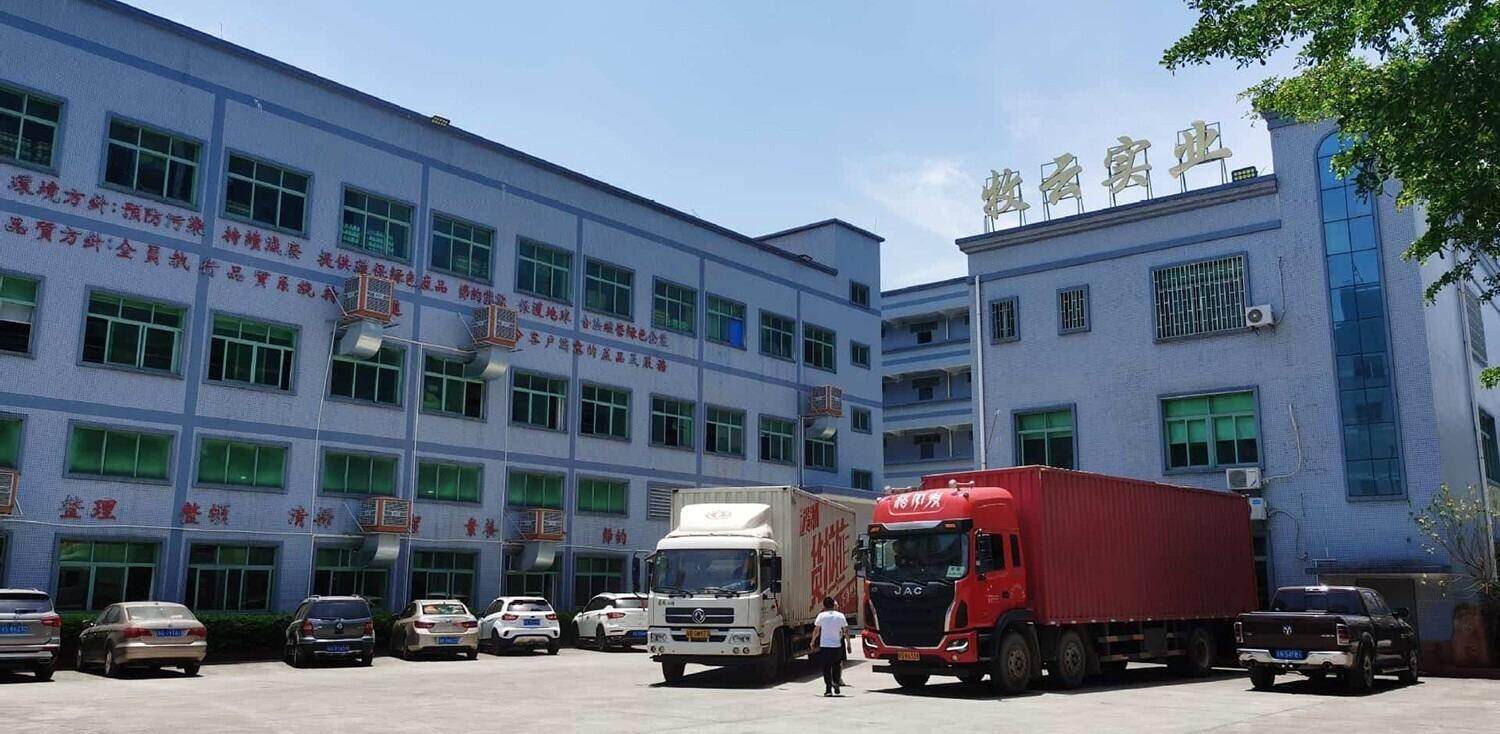
Siz uyga bir oz g'ayrioddiylik qo'shish usulini qidiryapsizmi? Recesky'nin sevimli tungi chiroqlaridan boshqa joyga qaramang. Bizning sevimli va yuqori sifatli tungi chiroqlarimiz sizning yuzingizga tabassum, qalbingizga esa iliqlik olib keladi. Bizning tungi chiroqlarimiz nafaqat chiroyli, balki amaliy hamdir. Ular kechqurun o'qish yoki dam olish uchun mukammal bo'lgan yumshoq, iliq nur beradi. Va bizning turli xil dizaynlarimiz bilan siz o'zingizning shaxsiy uslubingizga mos tungi chiroqni topishingizga ishonchingiz komil.

Bizning tungi chiroqlarimizning cheksiz qizg'inligi bilan oshiq bo'lishga tayyor bo'ling. Recesky Industry-da biz juda qiziqarli va jozibali dizaynlarni ishlab chiqarishdan faxrlanamiz, bu sizning yuragingizni eritadi. Bu quchoqlashadigan hayvonlar yoki o'yinchoq shakllar bo'lsin; ular sizni har doim tabassum qilishingiz uchun mo'ljallangan. Yuqori sifatli materiallardan tayyorlangan va energiya tejovchi LED lampalar bilan jihozlangan, bizning chiroqlarimiz nafaqat go'zallikni tarqatadi, balki uzoq muddatli yoritishni ham ta'minlaydi. Atrof-muhitni bizning qiziqarli tungi chiroqlarimizning qarshiligi bilan maftun qiling, har bir tunni quvonch va iliqlik bilan to'ldirib.

Joyful muhitni joyingizga qo'shmoqchimisiz? Siz to'g'ri sahifaga keldingiz. Bizning turli xil yoqimli tungi chiroqlarimizdan tanlang. Bu chiroqlar nafaqat yorug'lik beradi, balki yuragingizni eritatadigan chiroyli dekorativ buyumlar hamdir. Ular bolalar xonasi, yotoqxona yoki yashash xonasi bo'lsin, bizning yoqimli tungi chiroqlarimizni ishlatish darhol ko'taruvchi energiya yaratadi va har qanday joyga iliqlik beradi. Ushbu lanternalarning yumshoq porlashi va yoqimli dizaynlari ularni bolalar va kattalar uchun ideal qiladi. Bizning yoqimli tungi chiroqlarimizdan keladigan baxtni bahramand qiling va joyingizni g'ayrioddiy muqaddaslikka aylantiring.

Bizning yoqimli tungi chiroqlarimiz uxlashni yaxshilash uchun mavjud. Qorong'ulik dahshatini unuting va ko'plab ertaklar va qulaylikni kutib oling. Bizning yoqimli tungi chiroqlarimiz sizni uxlab qolishga undovchi yumshoq va tinchlantiruvchi yorug'likni tarqatadigan do'stlar sifatida xizmat qiladi. Ushbu chiroqlar bolalar va kattalar uchun ham yoqimli do'stlar bo'lib, yoqimli quchoqlash dizaynlariga ega. Bizning tungi chiroqlarimizning yoqimliligi uxlash vaqtini iliqlik va xavfsizlik bilan to'la qiziqarli sayohatga aylantirsin.

Uy bezaklaringizni yanada chiroyli qilishni xohlaysizmi? Bizning jozibali tungi chiroqlarimiz buni amalga oshirish uchun eng yaxshi yechimni taklif etadi. Ushbu yoqimli yoritgichlar nafaqat sovuq, yumshoq yorug'lik beradi, balki har qanday xonaning uslubini oshiradigan dekorativ jihozlarni ham hosil qiladi. Siz qulay va yoqimli bolalar xonasini, qiziqarli va mehmondo'st o'yin xonasini yoki tinch va maftunkor yotoqxonani xohlasangiz; bizning jozibali tungi chiroqlarimiz bunday ehtiyojlar uchun mukammaldir. Ularning noyob dizaynlari va detallarga e'tibor berilishi bilan, ular uy bezaklarimizga bir oz joziba va shaxsiy aksentlar qo'shib, uni haqiqatan ham noyob qiladi.

Recesky Industry (Dongguan) Co.,Ltd. Ўзгариш, ароматли суламитувчilar, Bluetooth динамики, uy xususiy maxsulotlar va лицензияланган.consumer maxsulotlari bo'yicha mutaxassislik ko'rsatadi. Bizning ish xonasida 100-320 tonnalik plastik шабуслик mashinalari kabi 20 dan ortiq to'plam avtomatlashtirilgan texnikalar bilan таьмин этилган. Манба техника инженерлари UV чап, лазер белгилаш ва issi belgilash kabi eng so'nggi texnologiyalarda махоратга эга. Барча максулотлар ISO9001, BSCI, QS, Disney ва бoshqa sertifikatlarga эга. Улар осони Корея, Япония, Индонезия, Тайланд, Вьетнам, Европа, Америка, Азиё ва Орта Халиқларда сотилади.
Recesky Sanoatida biz bizneslar va omborli xaridorlarning ehtiyojlarini tushunamiz. Shuning uchun biz sevimli kichik buyumlarimiz uchun ulgurji variantlarni taklif qilamiz, bu sizga inventarizatsiyani to'plash imkonini beradi, bankni sindirmasdan. Bizning ulgurji narxlarimiz juda raqobatbardosh bo'lib, sizga pulingiz uchun eng yaxshi qiymatni ta'minlaydi.
Brendingizni ajratib turadigan usulni qidiryapsizmi? Bizning ODM/OEM xizmatlarimiz sizga bizning yoqimli kichik buyumlarimizni o'z dizayningiz va brendingiz bilan moslashtirish imkonini beradi. Bu sizga kompaniyangizning imidjiga mukammal mos keladigan va maqsadli auditoriyangizga yoqadigan noyob mahsulotlar yaratishga imkon beradi.
Biz haqiqiy va yuqori sifatli litsenziyalangan iste'mol mollari taklif qilishimiz bilan faxrlanamiz. Ishonchli brendlar bilan hamkorlik qilib, bizning yoqimli kichik buyumlarimiz eng yuqori sifat va dizayn standartlariga javob berishini ta'minlaymiz. Bu sizga xarid qilayotganingiz haqiqiy mahsulotlar ekanligini bilish orqali tinchlik beradi, bu esa mijozlaringizga yoqadi.
Recesky Industry-da bizda tanlash uchun juda ko'p sevimli kichik buyumlar mavjud. Agar siz g'alati figurinalar, bezak buyumlari yoki funksional gadjetlar qidirsangiz, bizda har kim uchun biror narsa bor. Bu sizning biznes ehtiyojlaringiz va mijozlar afzalliklariga mos keladigan mukammal mahsulotlarni topishingizni ta'minlaydi.
Sevimli tungi chiroqlar yotoqxonalarda yoki bolalar xonalarida yumshoq, muhitni yoritish uchun mo'ljallangan dekorativ lampalardir. Ular ko'pincha bolalar va kattalarga yoqadigan sevimli dizaynlarga ega.
Sevimli tungi chiroqlar odatda yumshoq nur tarqatadigan past quvvatli lampaga ega. Ba'zi modellarda atrof-muhit yoritilish darajasiga qarab chiroqni avtomatik ravishda yoqish va o'chirish uchun sensor ham bo'lishi mumkin.
Sevimli tungi chiroqlar qorong'idan qo'rqadigan bolalar uchun tinchlantiruvchi muhit yaratishga yordam berishi mumkin. Ular, uxlayotganda ozgina qo'shimcha yorug'likni afzal ko'radigan kattalar uchun tasalli beruvchi mavjudlik sifatida xizmat qilishi mumkin.
Ha, ko'p chiroyli tun yorug'liklari xavfsizlikni hisobga olgan holda ishlab chiqilgan. Ular odatda past issiqlikli lampalar va mustahkam, bolalar uchun qulay dizaynlarga ega. Biroq, xarid qilishdan oldin mahsulot spetsifikatsiyalari va sharhlarini tekshirish har doim yaxshi fikr.
Yo'q, chiroyli tun yorug'liklari energiya samaradorligi uchun mo'ljallangan, hatto tun bo'yi yoqilgan holda juda oz elektr energiyasini iste'mol qiladi.
